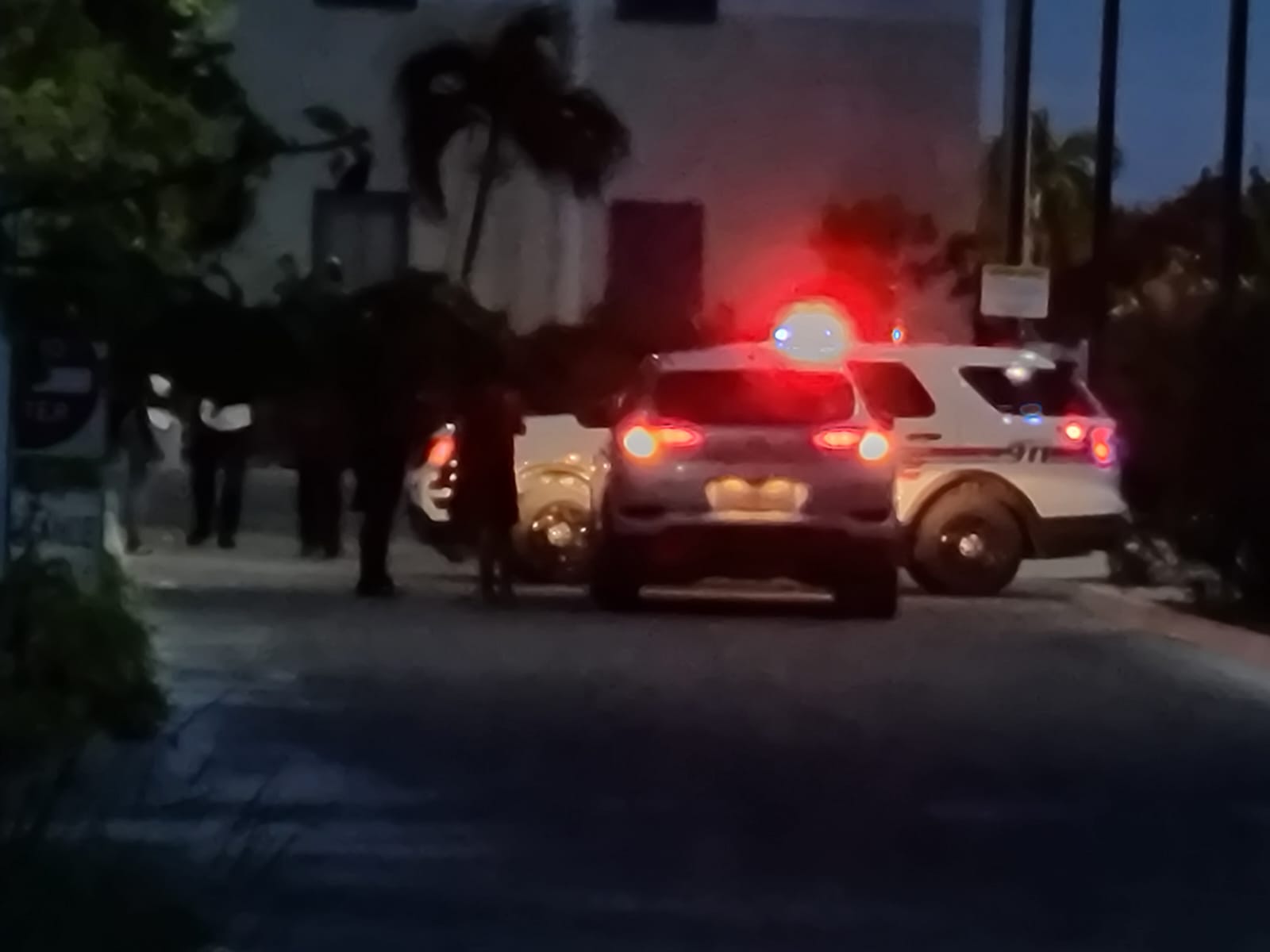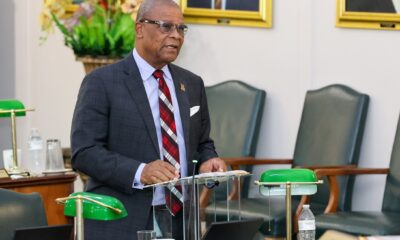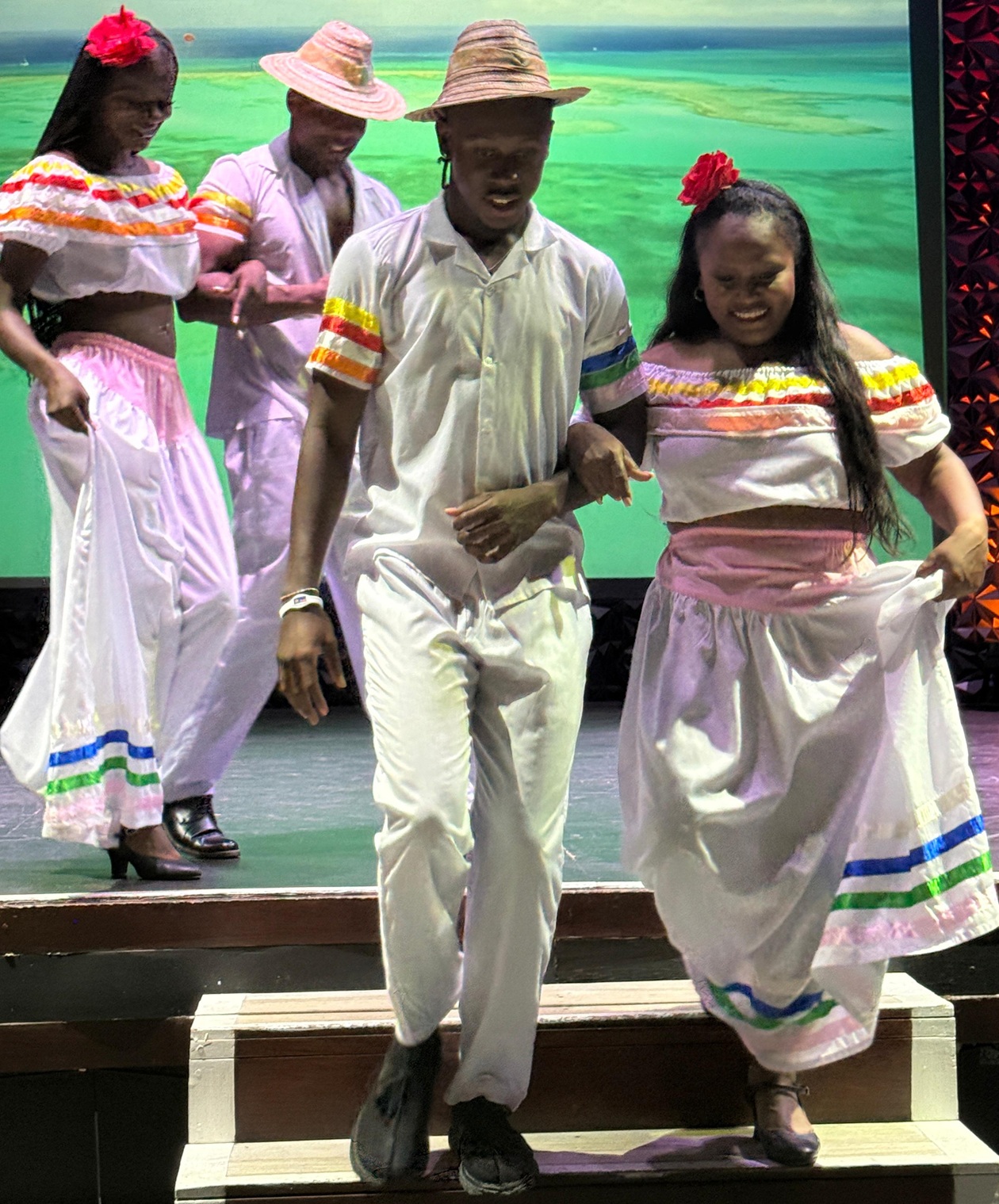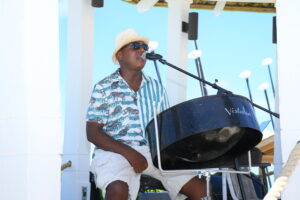News
Did TCI Police wait 30 weeks to get serious about radical, deadly gang turf war?
Published
3 years agoon

By Deandrea Hamilton & Dana Malcolm
Editorial Staff
#TurksandCaicos, October 6, 2022 – Questions are being raised about the timeline surrounding the flare-up of violence in the Turks and Caicos these last few days and whether earlier, strategic intervention could have saved lives and the TCIs reputation. The genesis of the senseless killing spree stretches back to March 2022 according to Nigel Dakin, TCI Governor; 207 days or nearly 30 weeks ago.
On Saturday March 12, 2022 the Turks and Caicos was in the midst of one of the first crime waves of the year, Four robberies had been carried out the night before and a man was robbed and shot in the early morning, that man would later die, and when Gari Santi Charles was murdered around 6pm that night, the nations security leaders were silent. There would be one more innocent man robbed and killed that week before a decisive statement was made.
Of the two innocent who were robbed and brutally murdered, Governor Nigel Dakin said, “It’s hard to find the appropriate words to express one’s heart-felt sympathy to those they leave behind nor utter words of sufficient condemnation to those who took their lives.”
Of Santi, not even his name was confirmed by the Governor or Police Commissioner Trevor Botting who both made extensive statements condemning the crime spree. All the public was told was that Police had been trying to apprehend him on four different occasions and were unsuccessful. Obviously, the police had an idea of how dangerous this man was proven by the many failed attempts to nab him.
A month passed and another wave of crime, including shooting robberies and home break ins began in early April. On the week of April 5th, Five Cays residents were forced to endure days of unexplained shootings that culminated in one injury and an extension of the failed gun amnesty. The police knew exactly who was doing the shooting, and said so in a statement on April 8th.
“Armed policing operations have been deployed in Five cays in response to this situation, both to push back against the criminals carrying and discharging firearms, but also to proactively target those who we know are responsible,” they said.
Three days later Randall Rigby Junior was shot by an officer in a planned policing operation on Venetian Road. The police say they went ‘to arrest a suspect for serious offences of violence and firearms related crime.’ A firearm was recovered on scene and an officer was injured. Rigby died in hospital that night, and the police indicated no further comment would be made.
Like Charles, Rigby was not named by the police and no gang related statements were ever made in regards to the two deaths.
Unbeknownst to the public, Charles’ death, and that of Randall Rigby would spell serious consequences for the country. That is according to Co-Chair of the security council Nigel Dakin in a statement on October 3rd.
“Several months ago, two local gangs, and yes, there is a very significant local element to this, two local gangs lost their leadership. One, extremely local, one extremely violent local gang leader was shot dead by police for resisting arrest. The other, a Haitian gang leader, who the police had made four separate attempts to arrest in the shanty areas of Romi Yard, was killed by one of his own gang, before he could be arrested.”
Between the deaths of Charles and the statement made by Dakin this past Monday, 207 days passed, 24 more murders were committed, all but one of them were young men and all but one of them who died was shot to death.
Fifteen of the 24 died in a 29-day span between September 3rd and October 2nd. Included in that tally are innocents who were resting on a Sunday morning, enjoying an island vacation, or just having a night out with friends. It was only after that bout of extreme viciousness that Governor Dakin, who chairs the National Security Council along with Premier Washington Misick, made the tell-all statement to the public from Parliament.
“The vacuum and confusion this created, allowing a predominately Jamaican gang, with a relatively small footprint here, to reinforce from Jamaica.”
The gravity with which the statement was delivered was felt deeply by Islanders, but it begs the question, how long have the powers that be had this information?
Was the issue raised with the Prime Minister of Jamaica on the Premier’s visit in August?
How long has the knowledge that Jamaican affiliated gangs had not only infiltrated the Turks and Caicos, but were expanding been in the hands of those with the power to do something about it?
The Government also obviously has some knowledge of the involvement of our own young men in the issue.
This is as referenced by Premier Washington Misick whose warnings on September 5th were a grim foreshadowing to Sunday’s murder of a tourist, who was killed by bullets meant for the tour operators.
Based on the fervor with which Charles was pursued, the capture of Rigby and the detailed statement on Monday, it is abundantly clear the police knew something. And yet no immediate announcement was made of the significance of these so-called dangerous ‘gang leaders’ to the public . Nor were the deaths followed up with any significant, on record, anti-gang operations, and to date no successful gang related convictions have been reported.
Only in the past few days has Turks and Caicos been supported by the UK, with a tactical unit training team arriving on Sunday. The governor said five had arrived on the day of a three person killing rampage.
The Bahamas, through its Police Force, would also lend manpower support within days of the address at the Legislature.
The Jamaican Constabulary Force is offering intelligence-led support as well, Magnetic Media has learned.
Meanwhile, it cannot be ignored that the Royal Turks and Caicos Police has acknowledged they are out of their depth and are calling in and grateful for reinforcements.
The question remains, why not sooner, when lives could have been saved and the onslaught of unprecedented crime could have possibly been averted altogether.
You may like
-


2,846 Jobs in the Pipeline; TCI with $430 Million Cash
-


Premier Washington Misick to UK: “If You Can’t Manage National Security—Turn It Over to Us”
-


A Nation Under Siege: Premier Demands UK Action After Deadliest Mass Shooting in TCI History
-


Premier Misick Sets the Tone for Justice Reform in Turks and Caicos
-


Premier Misick and Ministers ‘adamantly opposed’ 49 grants – Governor’s approval sparks outrage
-


Premier Misick Marks Government’s First 100 Days with Key Initiatives and Community Engagement
News
Commonsense, Not Confrontation: Why Kamla Persad-Bissessar Is Right
Published
2 weeks agoon
December 27, 2025
This debate did not start with Donald Trump, and it did not start this month.
For more than a decade, this reporter has had a front-row seat to repeated, urgent calls from across the Caribbean for stronger intervention by the United States in response to gun- and narcotics-fuelled violence that has hollowed out our communities. Long before today’s headlines, leaders warned that transnational gangs were outgunning police, draining public resources and stealing our youngest people.
Much of the public messaging leaned toward calls for fewer guns flowing from the United States, but the practical response from Washington evolved into something else: tactical undergirding of the Caribbean. Training, intelligence sharing, maritime surveillance and joint operations expanded under successive U.S. administrations — Republican and Democrat alike.
Then came Venezuela.
President Nicolás Maduro proved himself an unhinged and destabilising force, openly threatening Guyana’s oil-rich territory and pushing the region to the brink of a conflict no Caribbean state could afford. The United States showed up. The threat of war was blunted. That mattered.
But while geopolitical flames were contained, the narcotics trade exploded.
CARICOM convened emergency meetings on transnational gang violence. Crime became so pervasive that it was formally classified as a public health threat. Entire communities were terrorised. Courts clogged. Police forces stretched beyond capacity.
And now — quietly but noticeably — the tempo has shifted.
While no single forensic study can capture the full picture, it is easily verifiable on the ground that major narcotics busts and trafficking activity have slowed in recent months. Something has changed. Pressure works.
This is the reality Prime Minister Kamla Persad-Bissessar is responding to.
Her critics accuse her of breaking ranks. What she is actually doing is refusing to indulge in strategic hypocrisy — demanding international help to confront narco-terrorism while appearing to defend or excuse the very networks and actors we have spent years condemning.
Sovereignty is not an insult. The Caribbean invokes it constantly. To deny it to the United States — especially when the policies in question were telegraphed months in advance and remain adjustable — is not diplomacy. It is posturing.
What is most troubling is the region’s selective memory. CARICOM has directed months of rhetorical fire at Trump-era policies, yet when disaster struck — from security crises to Hurricane Melissa — the United States remained one of the region’s most reliable supporters. Outcomes matter more than allegiance theatre.
Kamla Persad-Bissessar is not suffering from Trump Derangement Syndrome. She is applying commonsense statecraft. She understands that small states do not gain leverage by moral outrage alone, and that credibility is lost when we appear aligned with individuals, regimes or activities we ourselves have deemed a threat.
Her warning to CARICOM is simple and necessary: do not undermine your own cause.
The Caribbean’s fight against narco-violence, corruption and instability has been long, costly and painful. If pressure is finally producing results, we should be wise enough to recognise it — and brave enough to say so.
Angle by Deandrea Hamilton. Built with ChatGPT (AI). Magnetic Media — CAPTURING LIFE.
News
Beaches Turks and Caicos Showcases and Supports Local Creativity
Published
4 months agoon
September 12, 2025
September 12, 2025
PROVIDENCIALES, Turks & Caicos Islands – The Turks and Caicos Islands are home to a wealth of creativity, from artisans and craft vendors to musicians and performers. Beaches Turks and Caicos, the Caribbean’s leading all-inclusive family resort, has pledged its continued support for these individuals by providing meaningful platforms for them to share their skills and stories with guests from around the world.
The resort’s commitment is most evident in its weekly Cultural Night showcase, where visitors are immersed in the vibrant traditions of the islands. Guests enjoy live performances which feature local music genres such as ripsaw, while artisans display and sell handmade creations. This event not only enriches the guest experience but also strengthens economic opportunities for local entrepreneurs.
Entertainment Division Manager Garett Bailey emphasized the significance of Cultural Night, “we want to showcase everything the Turks and Caicos Islands culture has to offer. Our goal is for guests to leave with a deeper appreciation of the island’s art, music and traditions, while giving local talent the opportunity to share their creativity with visitors from across the globe.”
Beyond Cultural Night, Beaches Turks and Caicos also welcomes local craft vendors onto the resort every Wednesday and Friday where they are offered a direct space to market their goods. Guests have easy access to the Turks and Caicos Cultural Marketplace, where they can purchase authentic local arts and crafts.
where they are offered a direct space to market their goods. Guests have easy access to the Turks and Caicos Cultural Marketplace, where they can purchase authentic local arts and crafts.
Managing Director, James McAnally, highlighted how these initiatives reflect the resort’s broader mission, “we are committed to celebrating and sharing the vibrant culture of these islands with our guests. By showcasing local artistry and music, we not only provide entertainment but also help sustain and grow the creative industries of the Turks and Caicos Islands. From our cultural showcases to nightly live music, we are proud to create authentic connections between our guests and the people of these islands.”
Local musician Keon Hall, who frequently performs at the resort, expressed gratitude for the ongoing partnership, “being able to share my music with Beaches’ guests has created lasting relationships. Some visitors return year after year and request songs from previous performances. This partnership continues to celebrate what we do and strengthens the bond between local artists and the resort.”
The resort’s support of local artisans and entertainers extends beyond business opportunity; it is about preserving heritage and sharing stories. Guests take home more than souvenirs; they leave with experiences that deepen their understanding of Turks and Caicos’ culture and history.
Public Relations Manager, Orville Morgan, noted the importance of this commitment, “for many visitors, these interactions represent their first genuine connection to the Turks and Caicos Islands. From artisans and musicians to farmers and transport operators, our local talent helps shape every guest experience. At Beaches, we are proud to give them the stage to share their stories and their heritage.”
Beaches Turks & Caicos remains dedicated to developing cultural connections and supporting the artisans, musicians and entrepreneurs whose creativity makes the Turks and Caicos Islands unique. Each guest experience is an opportunity to celebrate and sustain the spirit of the islands.
Caribbean News
“Barbecue” is Cooked! US Turns Over 11 Million Haitians into Potential Informants with $5 Million Bounty
Published
5 months agoon
August 12, 2025
August 12, 2025
The United States just set fire to the underworld in Haiti — and this time, the smoke might finally flush out the man many call the most feared in the Caribbean.
On Tuesday, the U.S. government slapped a $5 million bounty on the head of Jimmy “Barbecue” Chérizier, the ex-police officer turned gang boss accused of orchestrating massacres, torching neighborhoods, and strangling Haiti’s capital into chaos. This isn’t just a headline — it’s a full-blown game-changer.
turned gang boss accused of orchestrating massacres, torching neighborhoods, and strangling Haiti’s capital into chaos. This isn’t just a headline — it’s a full-blown game-changer.
That kind of cash — offered under the State Department’s Transnational Organized Crime Rewards Program — is enough to turn the country’s entire population, more than 11 million people, into potential informants overnight. Add the millions in the Haitian diaspora, and Chérizier isn’t just wanted. He’s surrounded.
The Number That Changes Everything
Five million U.S. dollars today equals about 655 million Haitian Gourdes. In a country where many scrape by on less than $5 a day, that’s not just life-changing — it’s life-defining. It’s enough to rebuild homes, put generations through school, or buy a one-way ticket far from the gunfire.
In a place where trust is scarce and survival is everything, that figure is more than tempting — it’s irresistible. For Chérizier, it means every friend could be a future informant, and every loyalist might be calculating the cost of staying loyal.
‘We Will Find Them’ — Jeanine Pirro, U.S. Attorney
Jeanine “Judge Jeanine” Pirro, the U.S. Attorney, set the tone with fire in her voice. “This indictment is the first of its kind,” she announced. “Jimmy Chérizier, also known as ‘Barbecue,’ is a notorious gang leader from Haiti who has orchestrated and committed various acts of violence against Haitians, including the 2018 La Saline attack in which approximately 71 people were killed. He both planned and participated in that massacre.
“Anyone who is giving money to ‘Barbecue’ cannot say, ‘I didn’t know.’ They will be prosecuted, and we will find them. They are supporting an individual who is committing human rights abuses, and we will not look the other way.”
Pirro wasn’t just going after Chérizier. She was sending a warning to the Haitian diaspora accused of feeding his war chest from abroad: the days of claiming ignorance are over.
‘No Safe Haven’ — Darren Cox, FBI
Then came Darren Cox, Deputy Assistant Director of the FBI, delivering the muscle of America’s most powerful investigative force. “There is no safe haven for Chérizier and his network,” Cox declared. “We are closing every link, every cell.” Since January, he said, the FBI has arrested three Top Ten fugitives, taken more than 19,000 criminals off the streets, and seized thousands of tons of narcotics — enough to save millions of lives across the U.S.
The FBI’s Miami and Houston offices have already bagged one of Chérizier’s Viv Ansanm associates inside the United States without firing a shot. “These efforts are a deliberate and coordinated plan,” Cox said, “to protect our communities and confront escalating threats from terrorist organizations like Viv Ansanm.”
‘Three-Year Investigation’ — Ivan Arvelo, HSI
Ivan Arvelo, Assistant Director of Homeland Security Investigations, brought the receipts. “This is the result of a three-year investigation into Chérizier’s procurement networks, cash pipelines, and operational financing that violates sanctions,” he explained. Arvelo described 400 structures destroyed, entire communities erased, and a gang exploiting U.S. dollars, technology, and immigration loopholes to keep its killing machine running. “We tracked how Americans unwittingly bankrolled brutality,” he said — proof that the net is tightening both inside Haiti and abroad.
‘The Worst of the Worst’ — Chris Lambert, State Department
Chris Lambert, representing the State Department’s International Affairs division, gave the political bottom line.
“Mass violence in Haiti must end,” Lambert said. “The instability resulting from Chérizier’s actions fuels illegal migration, regional instability, and transnational crime. We will continue to apply every tool available — including our rewards programs — to stop the spread of unchecked violence, especially to target the worst of the worst criminal leaders threatening the people of our hemisphere.”
instability, and transnational crime. We will continue to apply every tool available — including our rewards programs — to stop the spread of unchecked violence, especially to target the worst of the worst criminal leaders threatening the people of our hemisphere.”
Lambert confirmed what many have long known: Chérizier is not just a gang leader. He commands Viv Ansanm, officially designated in May as a Foreign Terrorist Organization. In the eyes of the U.S., that makes him not just Haiti’s problem — but everyone’s.
Why Haitians May Not Resist
In Haiti, money talks — loudly. And when you put 655 million Gourdes on the table, it shouts.
That’s the kind of figure that turns casual acquaintances into informants and makes even the most hardened loyalist wonder if the payout is worth more than the risk. It’s not a matter of “if” word gets out, it’s a matter of “who will be first to collect.”
For grieving families, it’s a chance at justice. For the desperate, it’s a chance at survival. For Haiti as a whole, it’s hope — wrapped in the most dangerous of temptations.
An Answer to Prayers
For years, Haiti’s headlines have been a scroll of horrors — kidnappings, executions, burned neighborhoods, bodies in the streets. Chérizier’s name has been attached to too many of them.
This move by the U.S. isn’t just strategy. It’s personal. It’s a signal to every Haitian — at home or abroad — that the days of impunity could be ending.
I’ll admit it: when I heard the news, I danced, I sang, and I nearly cried. Not because $5 million is a lot of money, but because of what it means — the possibility, at last, of stopping the man accused of helping turn Haiti into hell on earth.
Four officials, four angles, one mission: Pirro’s fire, Cox’s grit, Arvelo’s precision, Lambert’s conviction. Together, they’ve put the heat on “Barbecue” like never before.
BBQ is cooked. The only question now is: which one of over 11 million potential informants will serve him up?





